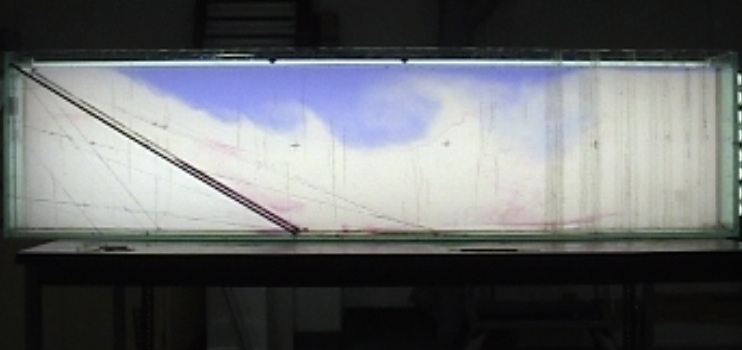
May - August 2011,
Departments of Physics and Earth and Atmospheric Sciences, University of Alberta

|
|
Experiments/Research performed by Delyle Polet, May - August 2011, Departments of Physics and Earth and Atmospheric Sciences, University of Alberta |
Though gravity currents come in many forms, we chose to investigate what is known as the "Full-Depth Case". This meant that we separated two fluids of differing densities with a lock, and the fluids had the same depth. The fluid with the lesser volume is called the "lock fluid", while the fluid with the greater volume is called the "ambient fluid". The currents can travel either at the top of the ambient (surface-propagating), at the bottom (bottom-propagating) or in the middle. In the latter case, the gravity current is called an "intrusion".
While the case of bottom-propagating gravity currents descending down slopes has been investigated, up until now no one has reported on the case of gravity currents approaching slopes. Here, we discuss experiments on one case: surface-propagating currents in a uniform ambient. We were able to develop theory for this case based on a famous paper by Brooke Benjamin (1968).
We used a rectangular Perspex tank with the following inside dimensions: 48.8cm high, 17.4cm wide and 197.3cm long. We filled the tank to a predetermined height and inserted a lock. Fluids were rendered denser through the addition of salt.
At some point during the addition of the ambient fluid, we put in a slope made of plastic. We took care to ensure the slopes were straight.
We filmed the experiments and analyzed the current speed using horizontal time series (HTS).
These experiments involved the parameters as shown below:

|
| Video of surface current approaching slope |
|---|

|
| H=30cm Hs/Ls=0.35 pa-pl=0.017 |
| HTS at z=28cm | Experiment to theory comparison | LnX vs LnT plot |
|---|---|---|
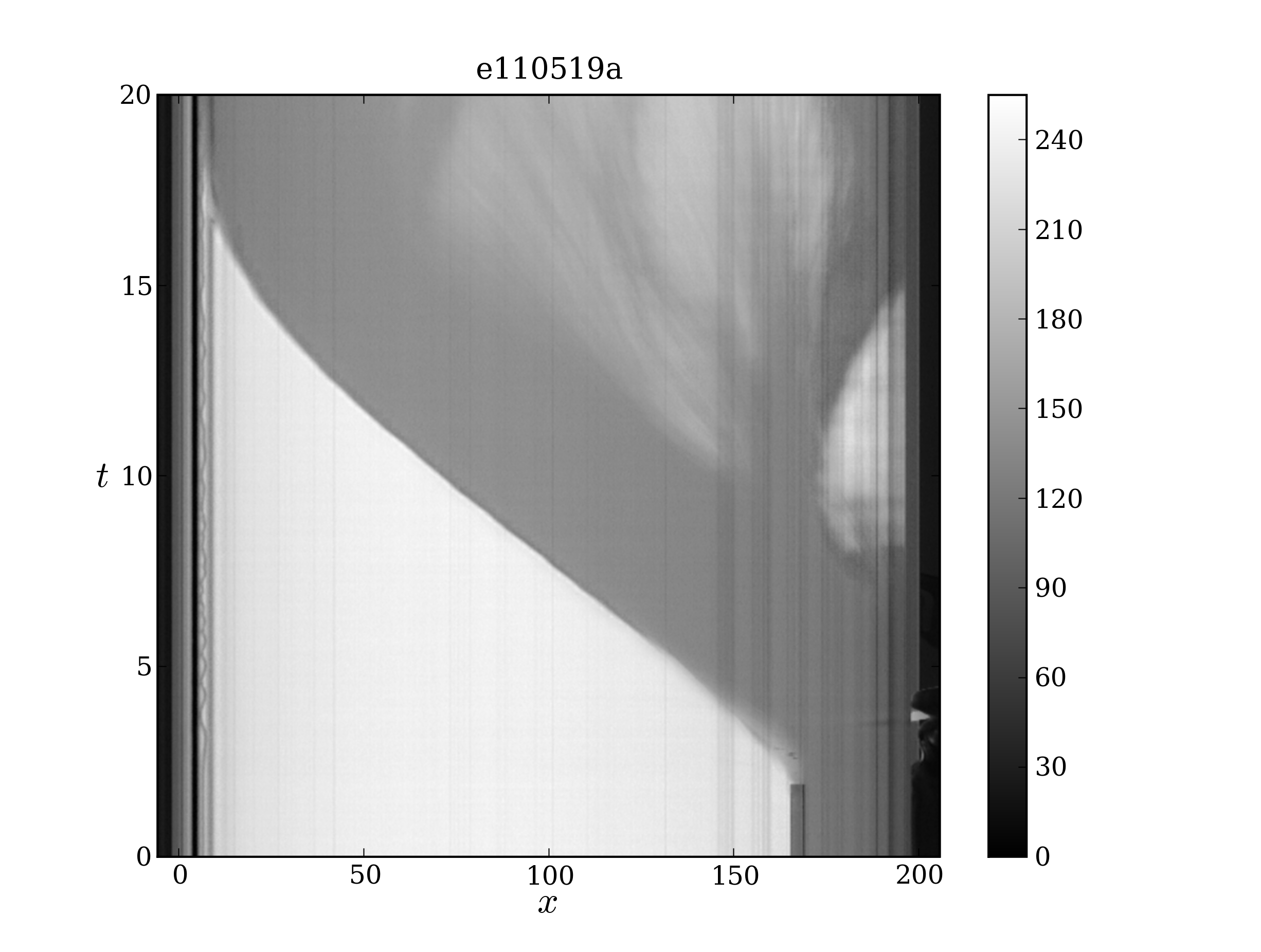
|
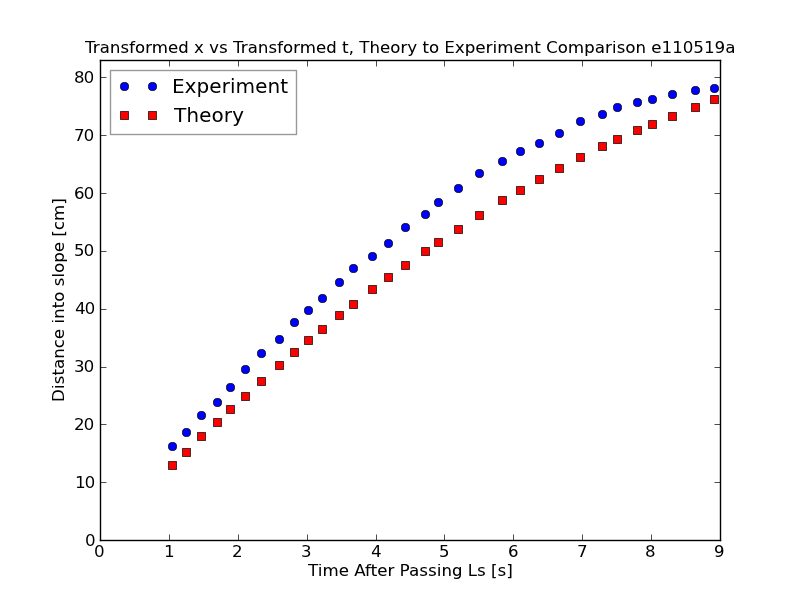
|
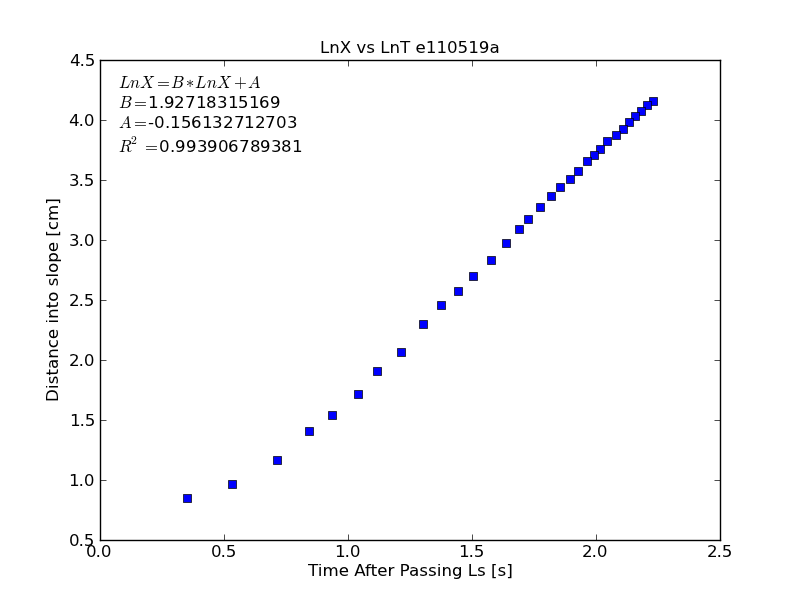
|
The time series above show that the gravity current travels at a constant velocity until it has gone some distance into the slope, where it begins to slow down. You can see the decelerating behavior by noting that the front of the current curves "up" in the image, implying a reduction in speed. We determined that the transition to decelerating behavior occurs when the front of the current is around x = Ls - Ho/2.
The X vs T plot above shows that the behavior of the gravity current is in close agreement with theory. The LnX vs LnT plot shows that the gravity current's position is more or less a quadratic function with respect to time, as the slope of this plot is close to 2. This agrees with theory, which predicts that x should be a quadratic with respect to t.
Using a polynomial least squares regression, we were able to find the acceleration of a given experiment. Using theory, we were able to predict the acceleration of a given experiment. A plot of Theoretical Acceleration vs Experimental Acceleration is shows that the theory generally under-predicts the actual acceleration. Nonetheless, this plot indicates that the theory is a good first-order approximation of reality.
| Theoretical vs Actual Acceleration |
|---|
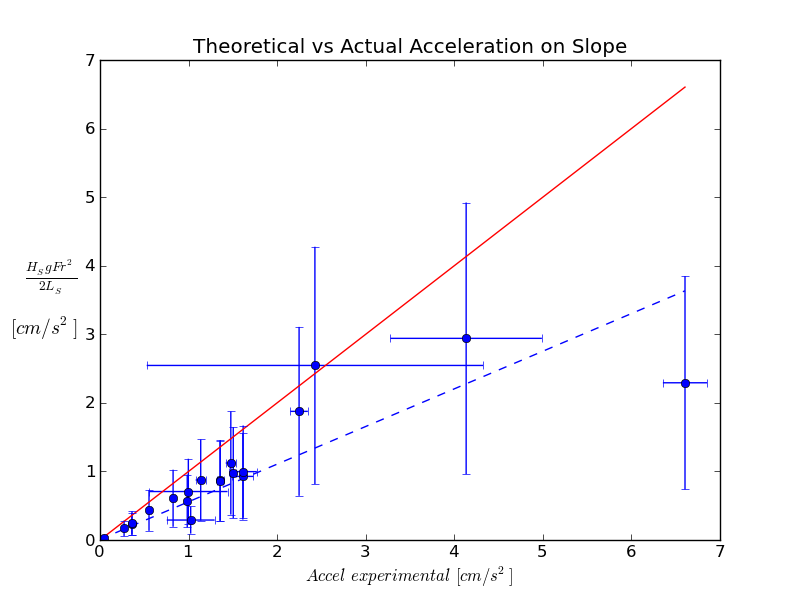
|
| One-to-One line in red; WLS is a blue dashed line; Experiments expressed as blue points Slope of best fit line, y = A + Bx: A = 0.0 ± 0.1; B = 0.55 ± 0.02 |
This work relates to previous experiments on gravity currents:
Department of Physics, University of Alberta
Department of Earth and Atmospheric Sciences